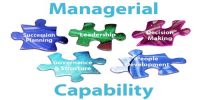Entrepreneurial competency results in superior performance of a job. Competency has a direct bearing on human behavior and performance. Therefore, entrepreneurial competencies are needed to be developed and cultivated in a very systematic manner. Competencies cannot be cultivated without having an appropriate comprehension and perceptive of their meaning, consequence, and relevance. The various methods or procedures suggested to develop and sharpen the entrepreneurial competencies are discussed below:
(i) Gaining Knowledge and understanding:
The first step towards acquiring a new behavior is to gain knowledge and understanding what a particular competence means. Competencies cannot be cultivated without having proper knowledge and understanding of their meaning, importance, and relevance. Therefore, it is essential to understand the various competencies required for the efficient performance of a given task.
(ii) Recognizing competency:
The next step in developing entrepreneurial competencies refers to competency recognition. Under this step, an effort is made to recognize the competency. Recognizing the competency helps an entrepreneur to know as to what are the competencies required to perform a given task in a particular manner when someone exhibits the same.
(iii) Self-assessment:
Once a particular competency is understood and recognized, the next step is to find out where one stands with respect to a given competency. In other words, does one possess the given competence and if so how frequently one exhibits the same in one’s day-to-day activities for achieving his desired goal. This step needs self-introspection as regards the level of a particular competence.
(iv) Application in real life situation:
Any new behavior that one acquires would become a part of one’s personality only when one applies the same on a continuous basis in various activities. Regular practice of activity brings perfection in the field. Therefore, there is a need to make an effort towards exhibiting all the competencies deliberately and consciously all the time even in the simplest activities that one performs.
(v) Comparison of comp6tencies:
The next step is to compare the individual competencies developed through regular practice with the competencies required for the desired performance. If any deficiency is observed between the two, then an earnest attempt is to be made to find out the reasons, thereof, so that necessary corrective measures can be taken for the same.
(vi) Feedback:
Having understood competence and practiced the same in a given situation one needs to introspect to find out how one’s new behavior or act of exhibiting a competence has been rewarding. This is called ‘Feedback’. This means, to find out the strengths and weaknesses of one’s new competence. It helps in knowing the rewards of new competency. If greater is the benefit, then more will be one’s determination to continue exhibiting the competence in a number of situations. It is through a continuous application that one can ensure that the desired competency becomes part of his habit or personality.














